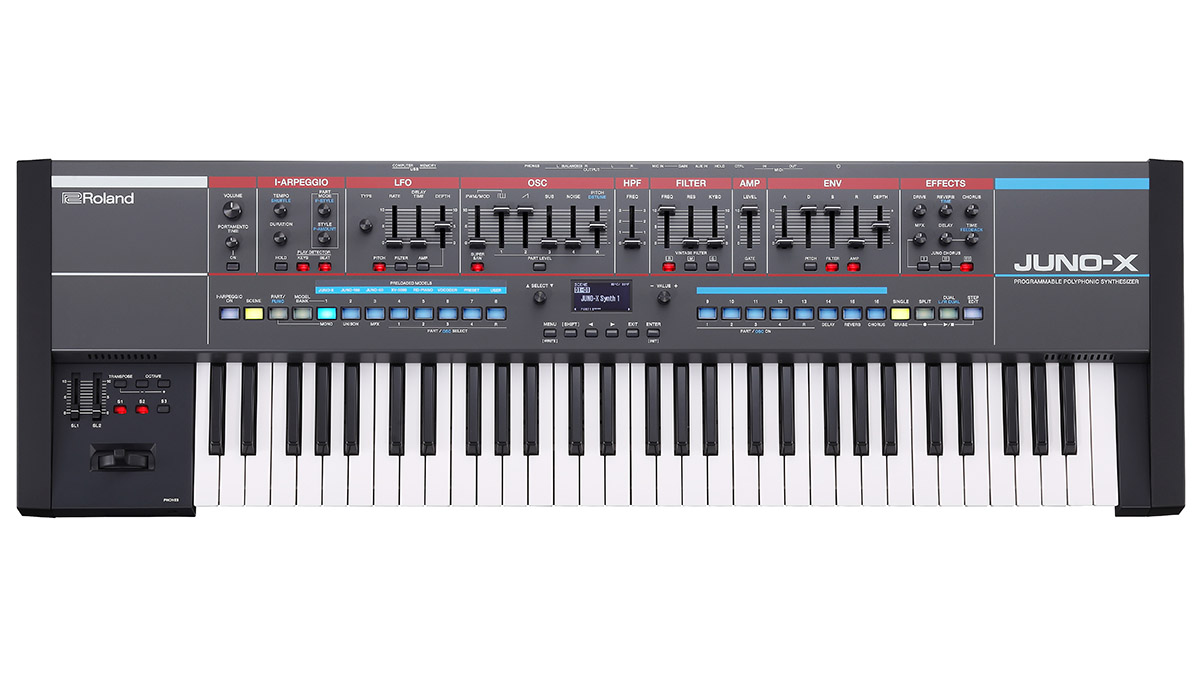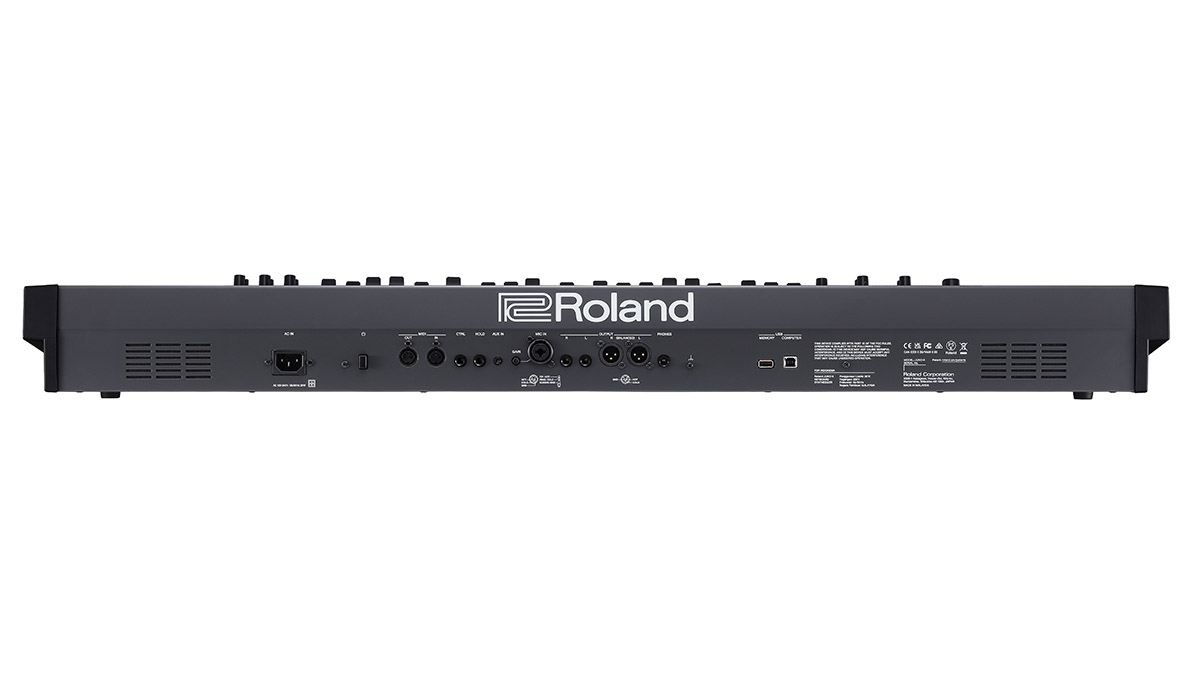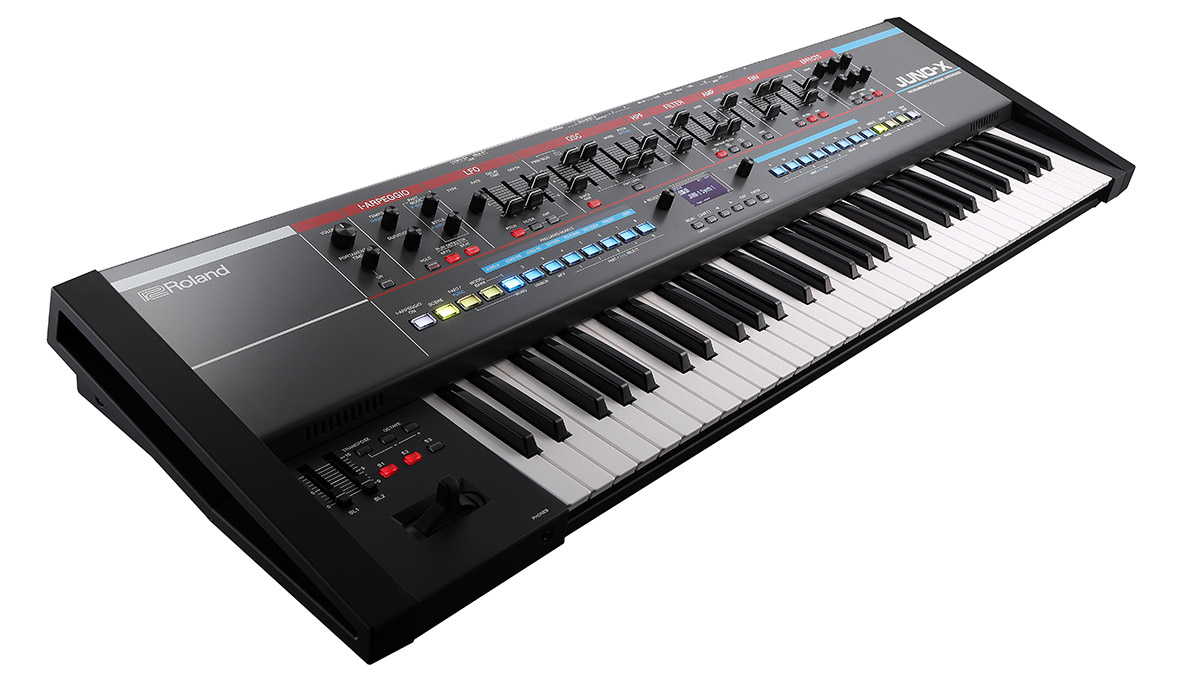Roland’s Juno-X is a modern-day synth in ‘80s clothing
It certainly looks like a a vintage Juno, but under the hood it’s a different story
Looking for all the world like it’s just come off Roland’s early-’80s production line - think Juno-106 and Juno-60 - the new Juno-X synth has a decidedly old-school appearance.
Inside, though, it’s a different story; the Juno-X features a full-fat version of Roland’s all-digital Zen-Core engine, along with emulations of both of those aforementioned Junos (60 and 106) and other Roland classics. Plus, you have the option to add more as Model Expansions.
Alongside this there’s an all-new Juno-X engine that features Roland’s classic Super Saw waveform, velocity sensitivity, pitch envelope controls and more. You get both of the original Juno chorus modes, too, plus a third mode that promises “even more fatness and swirl”.
These modes can be combined to create a total of seven different chorus effects, any of which can be applied to any Juno-X tone.
The Juno-X also features models of Roland’s PCM-based XV-5080, acoustic pianos from the RD series and a vocoder. Other models that can be added include the Jupiter-8, JD-800, SH-101 and Vocal Designer.
There’s support for Roland Cloud Connect, too - purchase the WC-1 wireless adapter and you get a year’s Roland Cloud Pro membership included, so you can browse, audition and load Model Expansion titles and other Pro membership content directly from the Juno-X.
As you can see, the Juno-X has inherited its forebears’ straightforward interface, the theory being that this will ease the sound design process. Up to four tones can be layered together, and there’s a significant complement of effects.
Want all the hottest music and gear news, reviews, deals, features and more, direct to your inbox? Sign up here.
You also get Roland’s I-Arpeggio function - first introduced on the Jupiter-X - which delivers both traditional arpeggio patterns and others that are driven by ‘intelligent’ algorithms.
Purists will be relieved to discover that Roland has kitted-out the Juno-X with a 61-note keyboard that supports aftertouch, while connectivity includes 1/4-inch headphone and L/R outputs, mic, aux and pedal inputs, standard MIDI I/O ports and USB ports for computer connection (MIDI and audio) and a flash drive.
You even get a set of built-in speakers - Bluetooth connectivity means that you can stream music through them from a mobile device - and software editing comes via the Juno-X Editor, which runs on PC and Mac.
The Juno-X will be released in May priced at $2,000. Find out more on the Roland website.






I’m the Deputy Editor of MusicRadar, having worked on the site since its launch in 2007. I previously spent eight years working on our sister magazine, Computer Music. I’ve been playing the piano, gigging in bands and failing to finish tracks at home for more than 30 years, 24 of which I’ve also spent writing about music and the ever-changing technology used to make it.